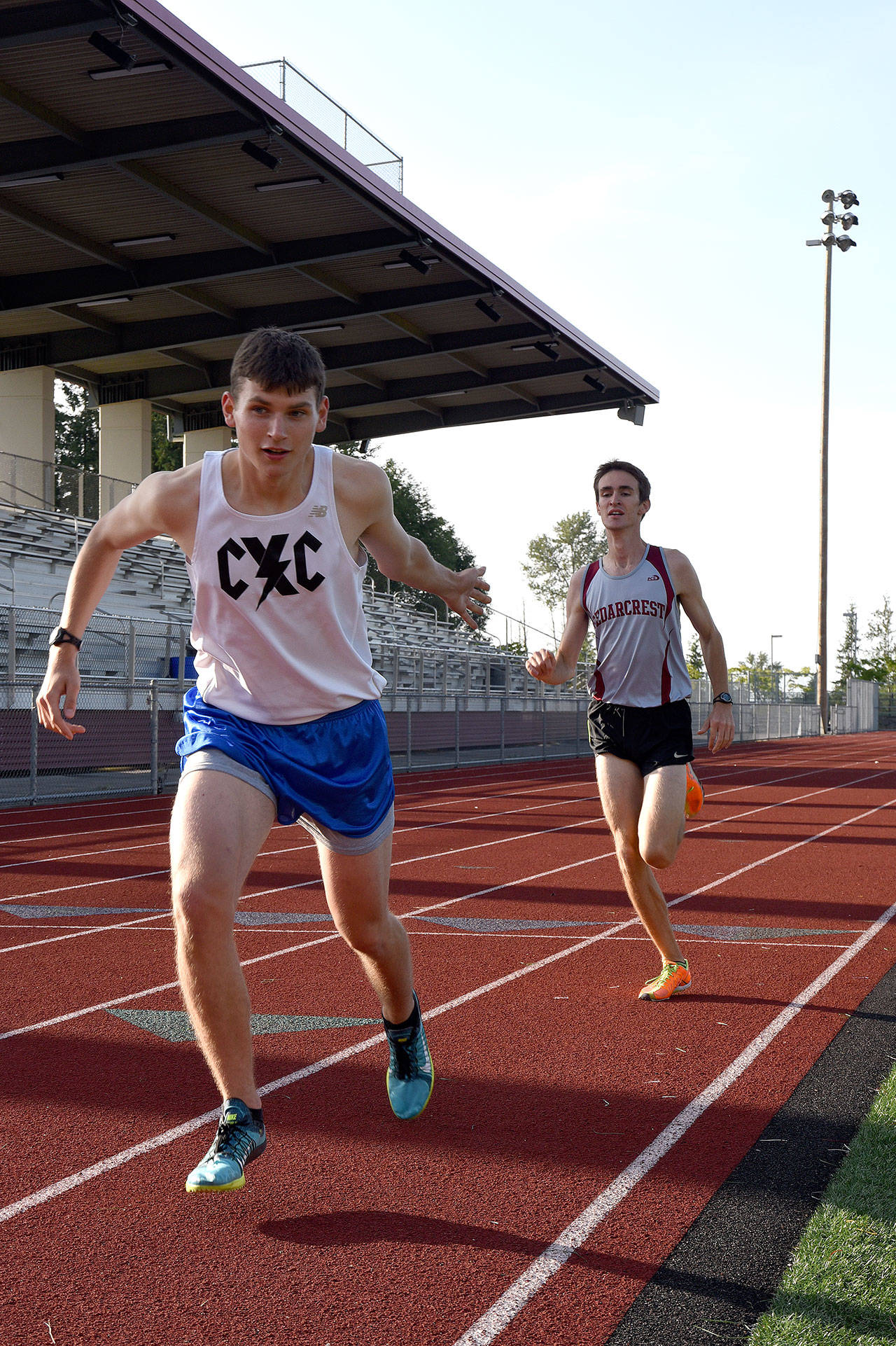They didn’t exactly replicate the conditions created by Nike in a May 5 attempt to break the two-hour marathon barrier last Friday. No custom shoes, no Italian Formula One racetrack, no pace-setting runners, but the eight Cedarcrest High School cross country runners who ran a 1:57:22 marathon in relay last Friday shared the same curiosity.
“It was a test of how fast a human could run under perfect conditions,” explained Emmett Klaiber, who will be a senior at Cedarcrest this fall. He and the other seven runners involved in Friday’s challenge had been watching the live stream of the event (which resulted in a record-breaking marathon time of 2:00:25), when he had the idea.
“I thought it would be cool if we could try it, as a relay,” he said.
The others — 2017 graduates Chase Bolin and Ian Fay, incoming seniors Ben Benson, Patrick McCabe, Daniel Murphy, Grant Van Valkenburg, and incoming junior Ryan LaTurner — were on board and started planning for their attempt.
First, there was the math; the 26.2 miles of a marathon breaks down to almost 42,165 meters, or 105 laps around the 400-meter track. Then there was the training. To break the two-hour barrier, they each had to consistently run a lap in 68.3 seconds or less.
“They’ll each do one lap each and then rest for seven laps,” explained Jennifer LaTurner, mother of Ryan. “Breaking a two-hour marathon is going to take a 68-second lap.”
“We’ve all hit it, once at least,” said Klaiber, a 3200-meter runner in track and field. “But for this, we’re going to have to hit it 14 times.”
They enlisted the help of head coach Bruce McDowell and assistant coach Dean Vergillo, and along the way, the whole project turned into a fundraiser.
“We’ve raised at least $1,000 by now for Treehouse for Kids,” said Murphy, who suggested the foster-child-supporting organization as the beneficiary. “My family does foster care, and they’ve helped us out a lot.”
Actually, they raised a lot more than that, because “A lot of people said if we beat the two hours, they’d double their donations.”
As the start of the race approached, the boys were warming up on the track, and still debating whether to use a baton for the run. Eventually, they agreed on a hand slap for the exchange.
“We decided that with 105 laps, one of us would probably drop it,” explained McCabe.
None of the guys talked about what they would do with their seven laps of rest between 400s, so the coaches reminded them to keep moving.
“The big question is, seven minutes is quite a bit of rest, but is it too much rest,” Vergillo said. His advice was to “keep jogging, padding around, stay loose and get your heart rate back to normal.”
For some of the runners, keeping a slower pace would become important he noted, for recovery times. Pointing to Fay, who was lying on the grass before the race, Vergillo said his 400 is about 16 seconds faster than the pace they boys had set for themselves.
“He normally runs a 53….”
Fay popped up to interject “hey, 52!”
“And at 52 seconds, he won’t be doing much after that,” Vergillo said.
It turned out, though, that after their laps, the guys did pretty much what they were doing before Grant Van Valkenburg started the race with a 65-second lap — a little stretching, a little joking, and a lot of cheering each other on. It was a cloudless, summer evening with a slight breeze, a few supporters in the stands, a successful fundraiser already behind them; maybe they replicated those perfect conditions, after all.



